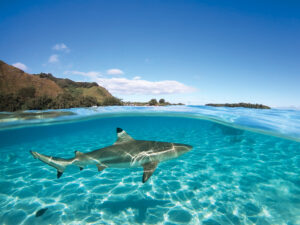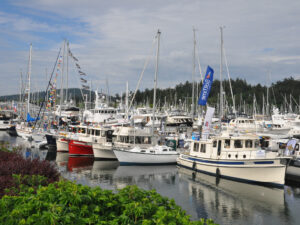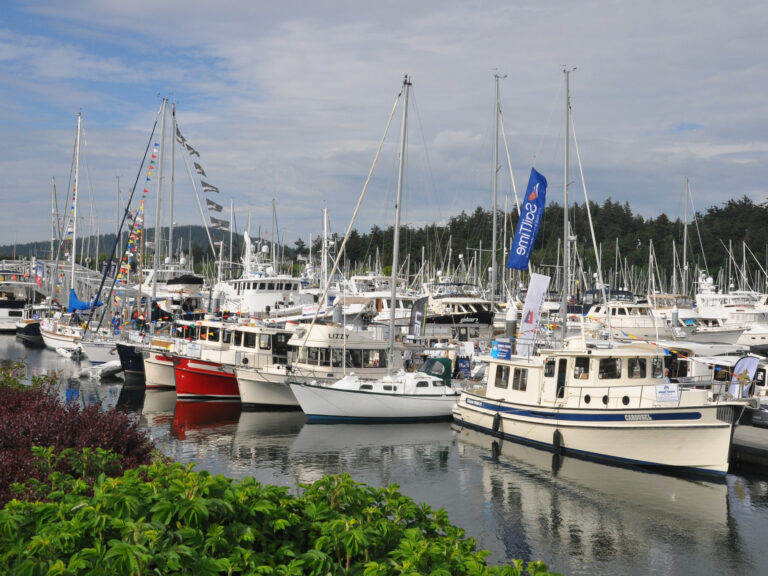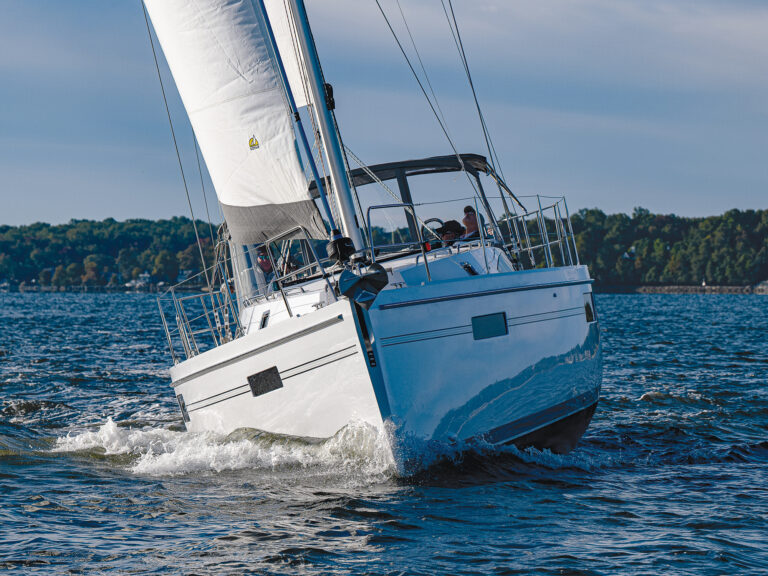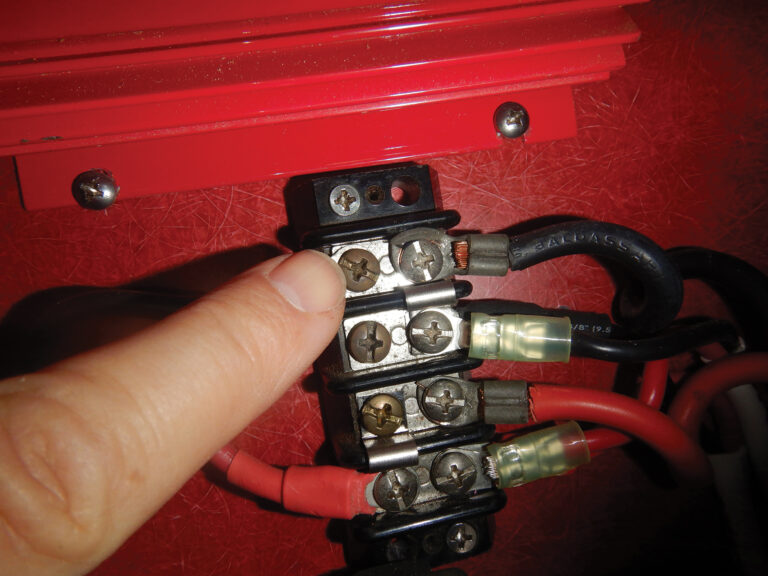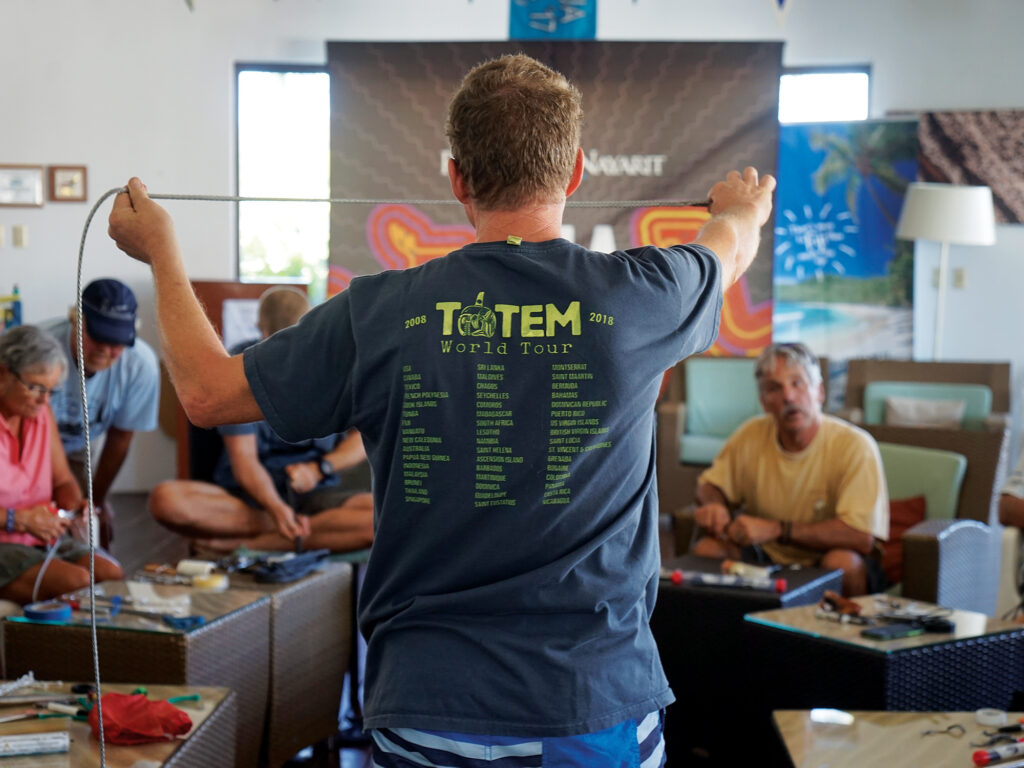
The squall came out of nowhere. One moment, we were carving gentle S curves through azure waters off the South of France, enjoying an evening of sea trials during the Cannes Yachting Festival. The next, the wind built fast, dark clouds rolled in, and the temperate chop turned into a sporty, confused sea. Boats lurched as gusts whipped across the decks, sending hats flying and soaking everyone on board with spray. By the time we made it back to the dock, we were drenched, humbled, and reminded of just how quickly a sea state can turn. At least there was a glass of crisp rosé waiting at the end.
Experiences like this reinforce an undeniable truth: When it comes to us mortals messing about in boats on Poseidon’s playing field, sea smarts are everything. Preparation and knowledge are what separate a confident sailor from a nervous one—and, in some cases, a safe passage from a dangerous one. That’s why programs available to cruisers, such as Sailing Totem’s TRU Coaching and Steve and Doris Colgate’s Offshore Sailing School, are so valuable.
Behan and Jamie Gifford, seasoned circumnavigators and regular Cruising World contributors, lead TRU Coaching, offering personalized mentoring to help aspiring cruisers navigate the complexities of life afloat. Their guidance covers everything from passage planning and troubleshooting systems to the less tangible, but equally important, mindset shifts needed for a successful cruising life. As you’ll find in our feature story on page 66, such support is a way to replace uncertainty with confidence, turning big dreams into achievable realities—even if you’re already halfway across an ocean.
Similarly, Steve and Doris Colgate’s Offshore Sailing School has been at the forefront of structured sailing education for more than 60 years. Their Fast Track programs provide intensive training that builds a strong foundation for sailors at every level. Whether you’re a beginner seeking ASA or US Sailing certifications or an experienced cruiser looking to sharpen your skills, Offshore’s instruction helps sailors become confident skippers, ready to handle whatever the sea throws their way. We had the opportunity to sit down with Steve and Doris while recording an Ahoy! podcast episode at the Annapolis Sailboat Show this past fall, and it didn’t take long for safety to become a central theme of our conversation—and with good reason. The school’s approach to sailing education prioritizes real-world preparedness, ensuring that students leave their courses with the skills to handle tough conditions, not just the ability to pass a test. You can listen to our full conversation by following the QR code in the Hands-On Sailor section of this issue.
Education, of course, doesn’t stop once you’ve earned a certification or completed a course. It’s a lifelong pursuit, and that educational platform, Hands-On Sailor, is designed to keep the learning going. Recently relaunched as a more complete resource for boat owners, it now covers everything from safety and seamanship to DIY projects, maintenance and the latest in marine technology. With expert-backed advice tailored for real-world sailing, and a new weekly newsletter delivering actionable knowledge straight to your inbox, it’s an invaluable tool for cruisers at every level. Scan the QR code below to subscribe.
Also, with our parent company’s recent acquisition of AIM Marine, we’re excited to partner with Boaters University, offering online courses in navigation, seamanship, maintenance and more. Explore the full array of courses at boatersuniversity.com.
Beyond seamanship, modern sailing is evolving with rapid advancements in marine technology, from AI-assisted autopilots to satellite communications. Cool, but with one caveat: Technology is only as useful as our ability to operate it. Just in the past year, readers have shared real-world lessons reinforcing this balance. One cruiser misread an improperly tuned radar and sailed into a storm. Another, relying on a lithium-battery system, found himself dead in the water because of a misunderstanding about charging requirements. These stories aren’t warnings against innovation, but they are reminders that education bridges the gap between tools and true seamanship.
Ultimately, the best sailors aren’t those with the most expensive gear or the latest gadgets. They seek knowledge, continue learning, and understand the balance between embracing new tools and mastering fundamental skills. My two cents? As you prepare for your next voyage, invest as much in learning as in equipment, because the most powerful tool aboard is an informed sailor.

